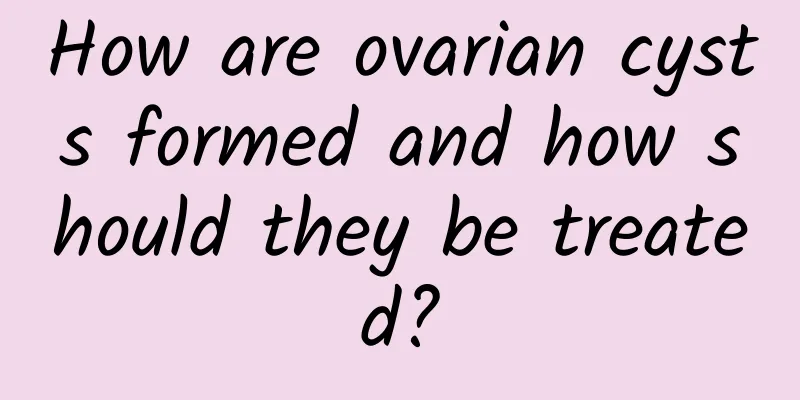How are ovarian cysts formed and how should they be treated?

|
There are many types of ovarian cysts, which can be divided into two categories: physiological and pathological. Physiological cysts are not real cysts and may disappear naturally over time. For example, an unruptured follicle may last for two or three cycles without rupturing and can be easily mistaken for an ovarian cyst. Another type is a corpus luteum cyst, which is a cyst formed when the corpus luteum does not disappear. Both do not require treatment and require observation for diagnosis. Pathological ovarian cysts can be divided into two categories, one is benign and the other is malignant. Benign pathological ovarian cysts include inflammatory cysts or chocolate cysts, tuberculous cysts, ectopic pregnancy cysts, etc. These cysts need to be treated with different methods. For example, inflammatory cysts form fluid accumulation in the fallopian tube or there are cysts in the adnexal area, forming inflammatory encapsulated fluid accumulation. If it affects pregnancy, surgical treatment is required; tuberculous cysts require anti-tuberculosis treatment; ectopic pregnancy cysts are more critical and should be treated surgically in time. The incidence of malignant cysts is relatively low, and the incidence in young women is usually less than 2%. Malignant ovarian cysts require comprehensive judgment through multiple means, and finally surgery is required to remove the cyst for pathological diagnosis. For different tumors, surgical treatment should be considered, and then necessary auxiliary measures should be taken to achieve the purpose of cure. Different cysts have different causes and different treatments are required for different causes. Once a woman develops an ovarian cyst, she should go to the hospital in time for treatment, and the doctor will evaluate and diagnose her and propose the correct treatment method. |
<<: Can eating durian relieve dysmenorrhea?
>>: There is very little leucorrhea after abortion
Recommend
What causes pelvic inflammatory disease? The causes are completely different
The incidence of pelvic inflammatory disease is r...
No change in body weight after exercise? There may be something wrong with the sports menu!
It can be frustrating to exercise regularly for a...
What if I haven't had my period for five months?
What happened if I haven’t had my period for five...
What are the dangers of cervical hypertrophy?
What are the dangers of cervical hypertrophy? Cer...
What is the reason for irregular menstruation after childbirth? 5 symptoms of irregular menstruation after childbirth
Many women will encounter such a situation, they ...
What are the symptoms of ectopic pregnancy in early pregnancy
Ectopic pregnancy refers to ectopic pregnancy. In...
What are the causes of irregular menstruation? There are 4 causes of irregular menstruation.
Normal menstruation is an important sign of matur...
Many gynecological diseases are the cause of cervicitis
Analyzing the causes of cervicitis is extremely i...
What are the dangers of mild cervical hypertrophy
What are the dangers of mild cervical hypertrophy...
Got a big appetite? Purple rice instead of white rice can help you lose weight
Purple rice is brightly colored and has a chewy t...
What are the main advantages of painless abortion?
Painless abortion is common knowledge among most ...
What does nursing care for patients with uterine effusion include?
The occurrence of uterine effusion brings great i...
There are several ways to diagnose ovarian cysts.
For women, only health can bring unparalleled cha...
What are the main causes of adnexitis?
What is the cause of adnexitis? What factors cons...
Treatment methods for multiple uterine fibroids How are multiple uterine fibroids treated by traditional Chinese and Western medicine?
Nowadays, there are indeed many ways to treat ute...









